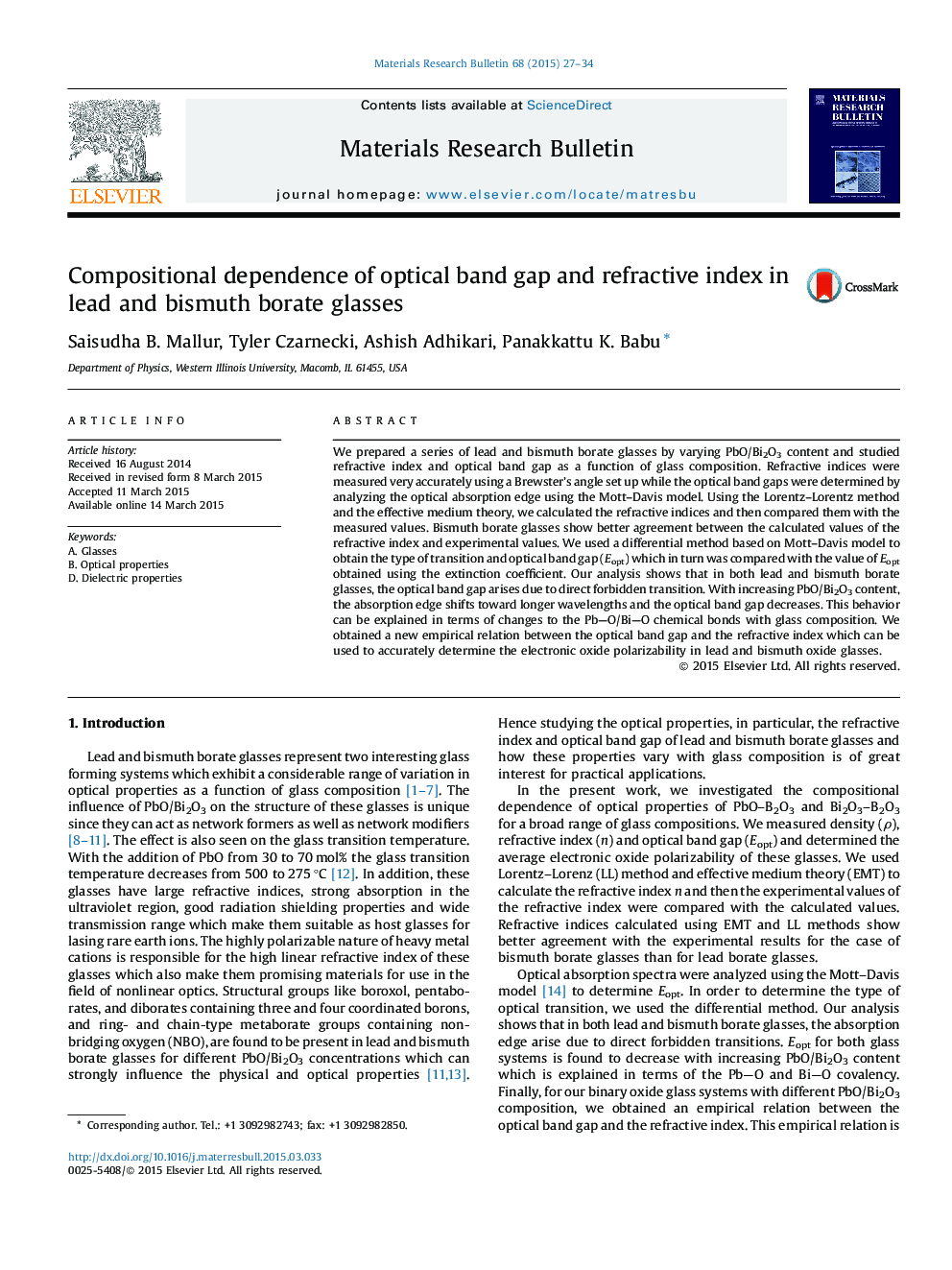| Article ID | Journal | Published Year | Pages | File Type |
|---|---|---|---|---|
| 1487718 | Materials Research Bulletin | 2015 | 8 Pages |
•Refractive indices increase with increasing PbO/Bi2O3 content.•Optical band gap arises due to direct forbidden transition.•Optical band gaps decrease with increasing PbO/Bi2O3 content.•New empirical relation between the optical band gap and the refractive index.
We prepared a series of lead and bismuth borate glasses by varying PbO/Bi2O3 content and studied refractive index and optical band gap as a function of glass composition. Refractive indices were measured very accurately using a Brewster’s angle set up while the optical band gaps were determined by analyzing the optical absorption edge using the Mott–Davis model. Using the Lorentz–Lorentz method and the effective medium theory, we calculated the refractive indices and then compared them with the measured values. Bismuth borate glasses show better agreement between the calculated values of the refractive index and experimental values. We used a differential method based on Mott–Davis model to obtain the type of transition and optical band gap (Eopt) which in turn was compared with the value of Eopt obtained using the extinction coefficient. Our analysis shows that in both lead and bismuth borate glasses, the optical band gap arises due to direct forbidden transition. With increasing PbO/Bi2O3 content, the absorption edge shifts toward longer wavelengths and the optical band gap decreases. This behavior can be explained in terms of changes to the PbO/BiO chemical bonds with glass composition. We obtained a new empirical relation between the optical band gap and the refractive index which can be used to accurately determine the electronic oxide polarizability in lead and bismuth oxide glasses.
Graphical abstractFigure optionsDownload full-size imageDownload as PowerPoint slide
